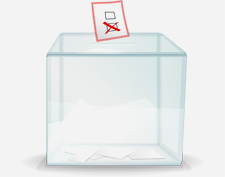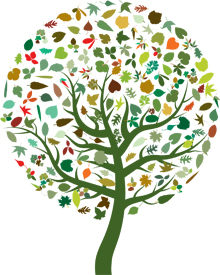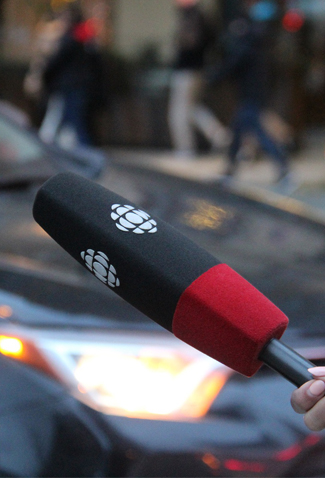23 Verify
Robert Sternberg
“Everyone is entitled to [their] own opinion, but not [their] own facts.”—Daniel Patrick Moynihan
What You’ll Learn:
- How to verify the reliability of a source
- How to verify evidence to gauge credibility and accuracy
- How to examine a source for conflict of interest
As you are probably well aware, the internet is filled with both information and disinformation. In this topic, we’ll discuss ways to distinguish between them.
Verifying the Reliability of a Source
Today, we mostly access information through various websites. So, what can we do to ensure that the information on these websites is reliable? The best place to start is with the website itself, or the source.
If you’re a postsecondary student, you’re fortunate to have privileged access to your college’s library, whose online databases contain hundreds of thousands of articles from sources that you can trust. That’s because they’ve been carefully selected by the librarians at your institution. In addition, your course instructors have likely included their own list of reliable sources for you to read and respond to.

The spread of disinformation became so controversial during the 2016 American election that it prompted Mark Zuckerberg to write an editorial in The Washington Post. In it, he urged his government to establish stricter online rules to protect elections.
Read the source.
Nevertheless, at some point during your studies, you’ll probably use online search engines to find supplementary articles on a given topic for the purposes of research and inspiration.
When verifying a source’s reliability, consider the three criteria discussed in Michael A. Caulfield’s 2017 book Web Literacy for Student Fact-Checkers, which he bases on Wikipedia’s guidelines for reliable sources.
These three criteria are:
- Process
- Expertise
- Aim
Read more about them here.
Verifying Evidence to Gauge Credibility and Accuracy
Michael A. Caulfield’s book Web Literacy for Student Fact-Checkers (2017) discusses “four moves” that students can make “when confronted with a claim that may not be 100% true” (Chapter 2, para. 1).
Read about them here.
For the following example, let’s focus on the first of Caulfield’s “moves,” which is to “go upstream to the source” (Chapter 2, para. 3). Many of the articles we read online consist of an author’s faithful—we hope—reporting on their sources. If you’re ever in doubt of an article’s credibility and accuracy, try to track down the original source and check. Let’s try it!
Tip
Nowadays, most articles include hyperlinks directing us to an article’s original source. This makes it fairly easy for us to verify the evidence. It also demonstrates the author’s and source’s commitment to transparency. However, if the hyperlink doesn’t allow us to verify the evidence—for example, if the link is dead—then we should call into question its credibility and accuracy.

In October 2014, David Suzuki published the article “Commissioner’s Report Shows Canada Must Do More for the Environment.” In it, Suzuki highlights the major findings of a report by then Commissioner of the Environment and Sustainable Development in the Office of the Auditor General of Canada, Julie Gelfand. His conclusion? Canada must do more for the environment.
Read the source.
Because the commissioner’s report is hyperlinked in Suzuki’s article, we can easily verify his summary and conclusion. Let’s take a look.
View the report here.
| SUZUKI (2014) | COMMISSIONER’S REPORT (2014) |
|---|---|
| “Canada is not on track to meet its greenhouse gas emissions targets” (para. 4). | “[T]imelines for putting measures in place to reduce greenhouse gas emissions have not been met” (Chapter 1, para. 13). |
| “[Canada] . . . has delayed monitoring of oil sands pollutants” (para. 4). | “Most [oil sands] projects we examined are being implemented according to schedule” (Chapter 2, para. 37). |
| “[Canada] . . . has no clear guidelines regarding what projects require environmental assessments” (para. 4). | “Overall, we found that the Agency’s rationale for identification of projects for environmental assessment is unclear, specifically in making its recommendations to designate projects that may require an assessment” (Chapter 4, para. 20). |
Examining a Source for Conflict of Interest
Up to this point, we have looked at ways to
- verify the reliability of the source; and
- verify evidence to gauge credibility and accuracy.
Similar to verifying reliability of your source is examining it for the possibility of conflict of interest. Take a look at the following excerpt from the “Conflict of Interest” section in the CBC’s Journalistic Standards and Practices:

CBC’s journalists are, first and foremost, expected to be independent and impartial. This means that our primary allegiance is to the public. Any conflict, real or perceived, between that allegiance and our personal or professional interests risks corroding the trust placed in us by Canadians.
This means we strive to avoid actions that create an impression of partisanship or of advocacy for a cause. It means we consider carefully what organizations we associate with. It means that we are mindful of our public statements. And it means we recognize that our personal and business relationships have the potential to affect the perception of our work.
To guide our actions, we refer to the code of conduct and the corporate policies on conflict of interest and on political activity, and comply with their requirements.
Dealing with any real or perceived conflicts of interest requires transparency. We have a duty to disclose such situations to our supervisor and to strive to resolve any problems that may arise from them. (CBC, n.d.)
As Canada’s public broadcaster, we should hope that the CBC lives up to these standards and practices when it comes to conflict of interest. Either way, such noble aims are useful to keep in mind when looking at other sources. Ask yourself:
- Does the source’s publisher also have a mission statement on maintaining journalistic integrity and avoiding conflict of interest?
- Do they also encourage their journalists to be “independent and impartial”?
- Do they put a similar emphasis on transparency when there is a “real or perceived conflict of interest”?
If the answer is “no” to any or all of the above questions, then it’s probably wise to be suspicious of the information you find in that source.
Tip

Look out for conflict of interest. For decades, tobacco companies claimed that smoking was not unhealthy. They supported their position with scientific tests to prove they were right, but tobacco companies were funding the tests, thus controlling the conclusions. Years later, objective research conducted by scientists independent of the tobacco companies proved the opposite—that smoking is a serious health hazard. This classic example of a conflict of interest is dramatized in the 2005 movie Thank You for Smoking.
You can read about the movie here.
Try It!
While thinking about the three criteria for verifying a source’s reliability—process, expertise, and aim—rank the following websites in order from “most” to “least” reliable. This is based on your opinion; there is no right or wrong answer. Share your list with your class and see if it differs from your peers.
| PRACTICE | SUMMARY |
|---|---|
| Verifying the reliability of a source |
Consider the three criteria discussed in Web Literacy for Student Fact-Checkers: process, expertise, and aim. |
| Verifying evidence to gauge credibility and accuracy |
Consider the four “moves” discussed in Web Literacy for Student Fact-Checkers: 1) “Check for previous work”; 2) “Go upstream to the source”; 3) “Read laterally”; and 4) “Circle back” (Caulfield, 2017, Chapter 2, para. 3). |
| Examining a source for conflict of interest |
Consider the CBC’s “Conflict of Interest” policy in order to see if your sources measure up to their standards. |
See related subtopics in Build Your Toolkit, and Absorb.
References
See Verify references
The trustworthiness of a source. If a source is credible, we have reason to believe that it’s factually accurate and reliable.
Correctness. An accurate statement is factual and precise.
A circumstance where someone communicating on a topic, promoting an idea, or occupying a position of authority stands to gain personally from others going along with their position.


In red, we see a discrepancy between Suzuki’s summary of the report and the report itself. Although the majority of Suzuki’s article is faithful to the report, this one discrepancy can impact its overall credibility and accuracy. As a result, Suzuki’s conclusion that “Canada must do more” is compromised. Of course, we would never have known this if we hadn’t made the extra move of “go[ing] upstream to the source” (Caulfield, 2017, Chapter 2, para. 3).